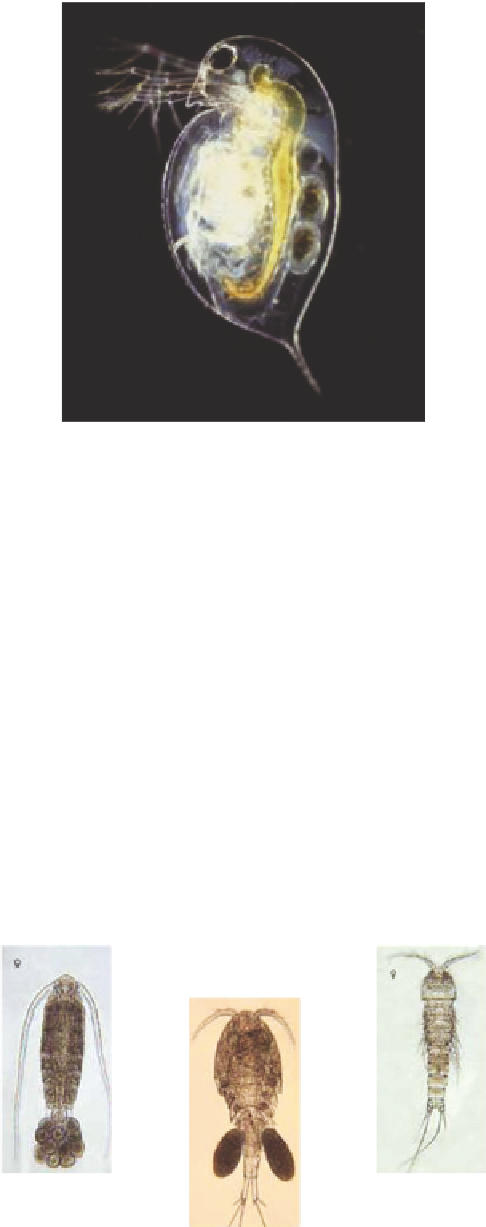Environmental Engineering Reference
In-Depth Information
FIGURE 15.20
Daphnia. (Courtesy of Wikimedia Commons.)
ive pairs of appendages, representing antennae and mouthparts, and the thorax with six pairs of
swimming legs (Figure 15.21).
15.3.1.2.2 Seasonal and Spatial Variations
As with phytoplankton, zooplankton population densities and species distributions can vary season-
ally and spatially. Variations may occur over seasons in part due to differences in the availability
and quality of food. Increases in turbidity, lows, and other factors also impact seasonal abundance.
Some copepods are able to survive unfavorable conditions (e.g., winter) by entering diapause, a rest-
ing state similar to hibernation (Balcer et al. 1984).
Zooplankton populations also vary horizontally. There is considerable “patchiness” of zooplank-
ton in the pelagic zone, which affects ish feeding behavior (Wetzel 2001). In addition, Wetzel
(2001) noted that the pelagic zooplankton exhibit an “avoidance of shore” so that the littoral and
near littoral waters are virtually free of pelagic zooplankton.
As with some phytoplankton, vertical migrations of zooplankton over diel (24 hour) periods, or
DVM, are well known. DVM is most conspicuous for the cladoceran zooplankton and to a lesser
Calanoid
Harpacticoid
Cyclopoid
FIGURE 15.21
Examples of copepods. (Courtesy of the NOAA Great Lakes Water Life Photo Gallery.)

Search WWH ::

Custom Search